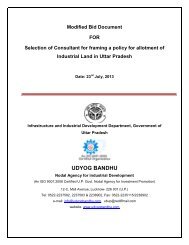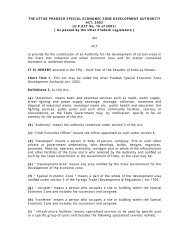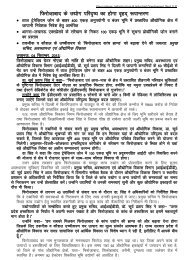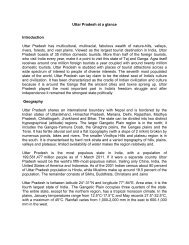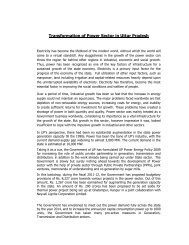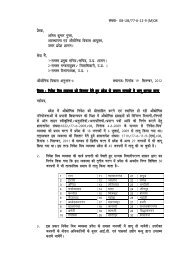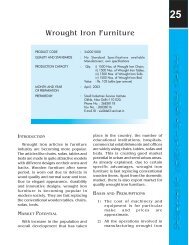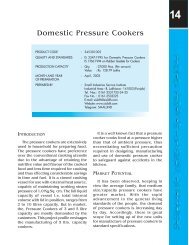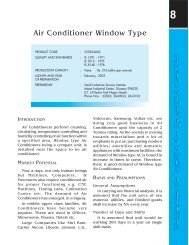PART - III - Udyog Bandhu
PART - III - Udyog Bandhu
PART - III - Udyog Bandhu
You also want an ePaper? Increase the reach of your titles
YUMPU automatically turns print PDFs into web optimized ePapers that Google loves.
Disinvestment Commission also sought to correct some erroneous perceptions about valuation.There is a general perception that since valuation models are quantitative, valuation isobjective. The Commission felt that though it is true that valuation does make use ofquantitative models, the assumptions made as inputs to the model leave plenty of room forsubjective judgments. At the same time, there may be no such thing as a precise estimate of avalue. Even at the end of the most careful and detailed valuation of a company, there could beuncertainty about the final numbers, as they are shaped by assumptions about the future of thecompany's operations.Another wrong perception sought to be corrected by the Commission was the relationshipattributed between valuation and market price. The benchmark for most valuations remains themarket price (either its own price, if it is listed or that of a comparable company). When thevalue from a valuation analysis is significantly different from the market price, the twopossibilities are that either one of the valuations could be incorrect. The Commission felt thatthe valuation done before listing takes into account anticipated factors, whereas market pricereflects realized events that are influenced by unanticipated factors. However, a specificvaluation itself may not be valid over a period of time. It is a function of the competitiveposition of the company, the nature of market in which it operates and Government policies.Therefore, it may be appropriate to update or revise valuations.In cases where strategic sale is done with transfer of management control, the Commission feltthat asset valuation should also be done. The views of the Commission in this regard are asfollows:"Strategic sale implies sale of a substantial block of Government holdings to a single partywhich would not only acquire substantial equity holdings of upto 50% but also bring in thenecessary technology for making the PSU viable and competitive in the global market. Itshould be noted that the valuation of the share would depend on the extent of disinvestmentand the nature of shareholder interest in the management of the company. Where Governmentcontinues to hold 51% or more of the share holding, the valuation will relate mainly tothe shares of the companies and not to the assets of the company. On the other hand, whereshares are sold through strategic sale and management is transferred to the strategic partner, thevaluation of the enterprise would be different, as the strategic partner will have control of themanagement. In such cases, the valuation of land and other physical assets should also becomputed at current market values in order to fix the reserve price for the strategic sale.To get best value through strategic sales, it would be necessary to have a transparent andcompetitive procedure and encourage enough competition among viable parties."2 Valuation Methodologies being followedMaking a valuation requires an examination of several aspects of a company's activities, suchas analysing its historical performance, analysing its competitive positioning in the industry,analysing inherent strengths/weaknesses of the business and the opportunities/threats presentedby the environment, forecasting operating performance, estimating the cost of capital,estimating the continuing value, calculating and interpreting results, analysing the impact ofprevailing regulatory frame work, the global industry outlook, impact of technology andseveral other environmental factors.Based on the recommendations of the Disinvestment Commission and in keeping with the bestmarket practices the following four methodologies are being used for valuation of PSUs: -a) Discounted Cash Flow (DCF) Method.b) Balance Sheet Method.138




